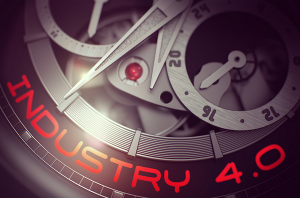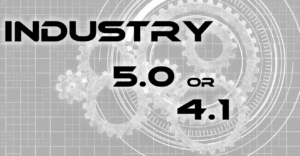Manufacturing has been the lifeblood of the global economy for hundreds of years. Because manufacturers have historically moved factories to regions featuring cheap labor and few regulatory restrictions (sometimes referred to as outsourcing or offshoring), a misconception has arisen about the importance manufacturing to national economies. Susan Helper, the Carlton Professor of Economics at the Weatherhead School of Management at Case Western Reserve University, along with Timothy Krueger, a Research Assistant at Policy Matters Ohio, and Howard Wial, a former Brookings analyst, insist manufacturing still matters — even for nations with advanced service economies, like the U.S. They write, “Manufacturing matters to the United States because it provides high-wage jobs, commercial innovation (the nation’s largest source), a key to trade deficit reduction, and a disproportionately large contribution to environmental sustainability.”[1] Manufacturing becomes even more relevant to advanced economies thanks to data and digitization. “We live in a data-driven world,” writes Graham Pickren, an Assistant Professor of Sustainability Studies at Roosevelt University. “From social media to smart cities to the internet of things, we now generate huge volumes of information about nearly every detail of life. This has revolutionized everything from business to government to the pursuit of romance. We tend to focus our attention on what is new about the era of big data. But our digital present is in fact deeply connected to our industrial past.”[2]
Data and digitization in manufacturing
According to Pickren, buildings that once housed factories are now often occupied by digital age businesses and data centers filled with computer servers. “The buildings themselves,” he writes, “are a kind of witness to how the U.S. economy has changed. By observing these changes in the landscape, we get a better sense of how data exist in the physical realm.” According to the World Economic Forum, data is now a valuable resource, like oil. Manufacturers are beginning to appreciate this new resource and, as a result, they are transforming to survive in the digital age. This transformation has been slow to unfold. According the editorial staff at Supply Chain Digest, there are reasons for this procrastination. “US manufacturers may be going slow in terms of ‘digitizing’ their operations, and face criticism in some quarters for moving too slowly,” the SCD staff writes, “but the careful steps by most manufacturers to go digital and follow the ‘Industry 4.0’ model are happening for good reasons.”[3] After all, anyone would be cautious about changing a system that has proven profitable for decades. The SCD staff cites Stephen Gold, CEO of the Manufacturing Alliance, who observes, “We’re still very early in the game … and manufacturers who haven’t figured out how to apply Industry 4.0 across their companies are far more the norm than the exception.” He also notes the trend is clear. “There is little doubt that new technologies such as artificial intelligence, data analytics, and cognitive technologies ‘will eventually lead to the development of global systems that create dramatic efficiencies and enable business leaders to make more informed integrated decisions.'”
“The manufacturing industry has long been one that is content with a satisfactory status quo,” writes Michiel Schipperus (@Schipperus), CEO of Sana Commerce. “There is a defined way of operating within the supply chain that has performed well enough, for the time being, leading many manufacturers to deem digitization unnecessary.”[4] Such complacency, he argues, can be fatal. He concludes, “Taking the first step to digitization is critical to setting the foundation for a future-facing approach to manufacturing. Getting a head start on being even a single beat ahead of the competition, in such a tight race, can make all the difference — and it all starts with the right investment … in digital.” Digital transformation starts with obtaining and understanding data. More and more often in the manufacturing sector that data is being generated through the Internet of Things (IoT), sometimes referred to as the Industrial Internet of Things (IIoT). Marcia Walker writes, “The industrial internet of things is poised to transform everything from the factory floor to the logistics of shipping, receiving, and maintaining products at the customer site.”[5] She adds, “Ongoing improvements in sensor technologies — including miniaturization, performance, standardization in communication protocols, cost and energy consumption — have made intelligent products more accessible. Manufacturers are increasingly installing sensors in production facilities and in the industrial goods they sell. And these sensors are producing data at an unprecedented rate.” Digital transformation is all about leveraging that data to gain a competitive edge.
Advancing digital transformation
Boston Consulting Group executives, Lars Fæste (@Lars_Faeste) and Antoine Gourévitch (@AGourevitch1), insist, “Leveraging the power of fresh, granular data for business success is becoming a question of life or death.”[6] They add, “In our experience, the most successful data-driven transformation efforts are cost-effective, incremental and sustainable. They follow three steps. They start with pilots that pay off in weeks or months, followed by a plan for tackling high-priority use cases, and finish with a program for building long-term capabilities.” Quick wins are always important. At Enterra Solutions®, we call this a crawl, walk, run approach. Simon Jacobson, a Vice President at Gartner, agrees pilot projects are the best way to begin the digitization process lest unbridled enthusiasm blind company executives to stark realities. He explains, “The term ‘digital’ is a galvanizing bandwagon to hitch many initiatives to but it doesn’t alleviate the relentless pressures to optimize costs, overcome the lengthy backlog of technology and skills investments, and the persistent labor versus automation tradeoffs. Organizations … struggle to manage the differences between ‘going digital’ and ‘being digital’. Although the thick barriers or conservatism and experiential bias are giving way to infectious enthusiasm and a willingness to explore, pilot, and operationalize new ways of working rewriting the rules isn’t too easy.”[7]
One of the realities companies must face is that leveraging data can be difficult. Patrick Murphy, a Cognitive Manufacturing executive at IBM, explains, “The Fourth Industrial Revolution, often called Industry 4.0, is now underway. This is the manufacturing side of digital transformation — ‘smart factories’ that deliver intelligence on demand. The evolution of data-driven autonomous systems and machine learning tools underpins the promise of Industry 4.0 as organizations look to connect IoT devices, collect critical metrics, visualize data in real time, analyze results and optimize manufacturing processes. But there’s a caveat: While typical factories now generate one terabyte of production data each day, more than 90 percent of this information isn’t properly utilized.”[8] He goes on to note that cognitive technologies offer companies a way to leverage data and advance their digital transformation journeys. He concludes, “Cognitive solutions learn the unique processes that underpin critical assets, and employees trust in machine learning tools. The result is a continually expanding knowledge base informed by factory-specific behavior that can help you onboard new employees and drive prescriptive manufacturing strategies. Industry 4.0 is changing the manufacturer journey, with digital transformation now forming the foundation of smart factories driven by intelligence on demand.”
Concluding thoughts
According to Jacobson, “The ‘Holy Grail’ is a world of smart, interconnected, digital, integrated, autonomous, and automated factories. An ecosystem anchored by solutions that are rich, robust, dynamic, and scalable.” The good news, he writes, is, “The ‘art of the possible’ is now very very real.” But, as Gold notes, “We’re still very early in the game.” Manufacturers eager to advance their digital transformation journey are embracing cognitive technologies. They also know the journey will be long and slower than many executives desire it to be. Gold concludes, “The caution among manufacturers in going digital isn’t about a lack of internal strategic alignment and short-term focus. The world of manufacturing is complex. There are countless pieces to this puzzle, and the technology piece is likely not the hardest to solve.”
Footnotes
[1] Susan Helper, Timothy Krueger, and Howard Wial, “Why Does Manufacturing Matter?” The Brookings Institution, 22 February 2012.
[2] Graham Pickren, “The factories of the past are turning into the data centers of the future,” The Conversation, 7 January 2017.
[3] Staff, “Supply Chain News: It should not be Surprising Manufacturers are Slow to Digitize,” Supply Chain Digest, 30 January 2019.
[4] Michiel Schipperus, “4 Misconceptions Manufacturers Have About Digitization,” Manufacturing.net, 4 April 2019.
[5] Marcia Walker, “How the IoT Data Tsunami Is Driving Manufacturing Innovation,” IndustryWeek, 25 January 2017.
[6] Lars Fæste and Antoine Gourévitch, “Three Steps for Manufacturers to Begin their Digital Transformation,” IndustryWeek, 28 June 2017.
[7] Simon Jacobson, “Digital Manufacturing’s Holy Grail Is Within Reach,” Gartner Blog Network, 6 February 2019.
[8] Patrick Murphy, “The Manufacturing Side of Digital Transformation,” Longitudes, 4 April 2019.





